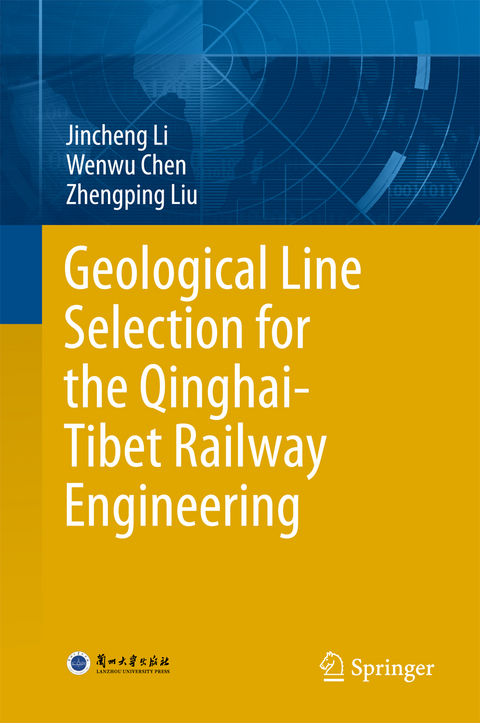
Geological Line Selection for the Qinghai-Tibet Railway Engineering
Springer Berlin (Verlag)
978-3-662-55570-5 (ISBN)
Mr. Jin-Cheng Li, Vice President of China Railway First Survey & Design Institute Group, has been working as the Chief Engineer on the Qinghai-Tibetan railway construction project since 2000 and has accumulated substantial first-hand experience of railway routing in complicated geological environment on Qinghai-Tibetan plateau, such as railway routing in permafrost regions, active fault zones, meizoseismal areas, natural reserves, slope-geohazard regions, as well as geothermal, windy-sand, and snow drift hazard regions. He has several important publications to his name and has won a number of honors for his outstanding contributions to the construction of more than ten national key railway projects. Selected Publications: 1. Jin-Cheng Li, Design of Access Tunnels for Guanjiao Super-long Tunnel, Modern Tunneling Technology, 46 (2009) 1-7 2. Jin-Cheng Li, Waterproofing and Drainage Measures Adopted in Guanjiao Super-long Railway Tunnel, Modern Tunneling Tec hnology, 5 (2008) 65-71
Introduction.- The Qinghai-Tibet Railway Geological Environment.- Geological Line Selection in Permafrost Regions.- Geological Line Selection in Active Fault Zones and Meizoseismal Areas.- Railway-Line Selection in Slope Areas.- Route Selection in Nature Reserves .- Railroad Route Alignment Design in the Geothermal, Aeolian, and Snow Drifting Areas.
| Erscheinungsdatum | 03.12.2017 |
|---|---|
| Zusatzinfo | XVII, 315 p. 61 illus., 13 illus. in color. |
| Verlagsort | Berlin |
| Sprache | englisch |
| Maße | 155 x 235 mm |
| Gewicht | 666 g |
| Themenwelt | Naturwissenschaften ► Biologie ► Ökologie / Naturschutz |
| Naturwissenschaften ► Geowissenschaften ► Geologie | |
| Technik ► Bauwesen | |
| Schlagworte | Earth and Environmental Science • earth sciences • Geochemistry • Geoengineering, Foundations, Hydraulics • Geological Routing • Geotechnical Engineering & Applied Earth Sciences • Geotechnical Engineering & Applied Earth Sciences • Geothermal Region • hydrogeology • Hydrology & the hydrosphere • Hydrology & the hydrosphere • Meizoseismal Area • meteorology & climatology • Meteorology & climatology • natural disasters • Natural Hazards • Permafrost Region • Qinghai-Tibetan Railway • Railroad Optimal Routes • Railroad Trackage • Railroad Trackbed Stability • Slope Geohazards Region • Snow Drift Hazard Region • Windy-sand Region |
| ISBN-10 | 3-662-55570-0 / 3662555700 |
| ISBN-13 | 978-3-662-55570-5 / 9783662555705 |
| Zustand | Neuware |
| Haben Sie eine Frage zum Produkt? |
aus dem Bereich


